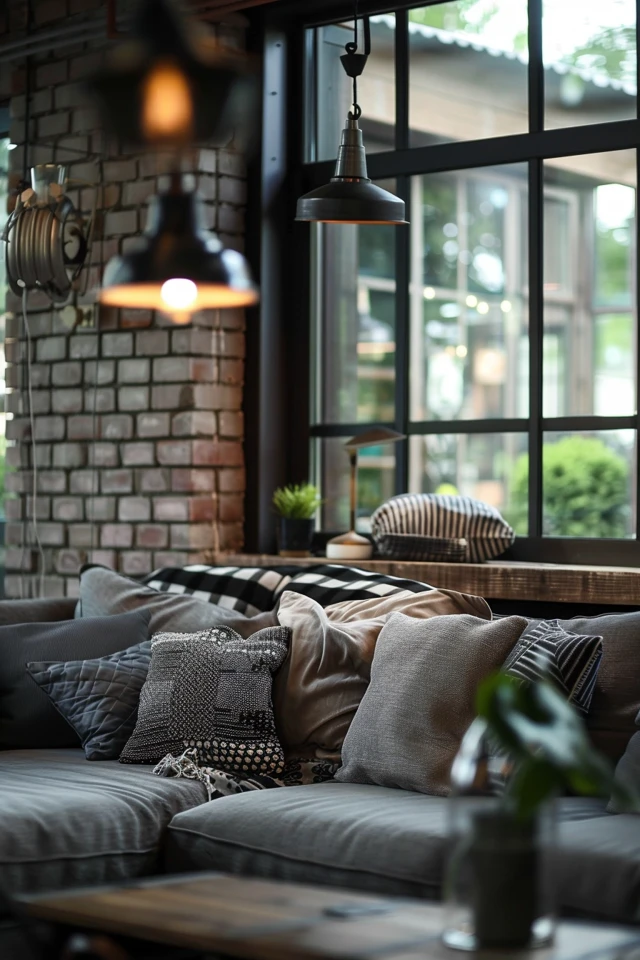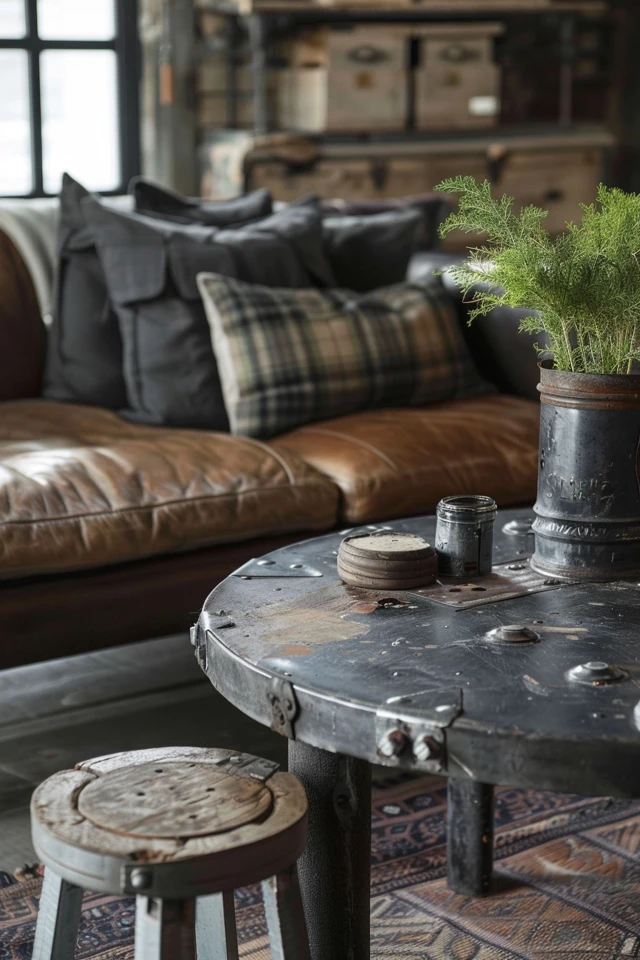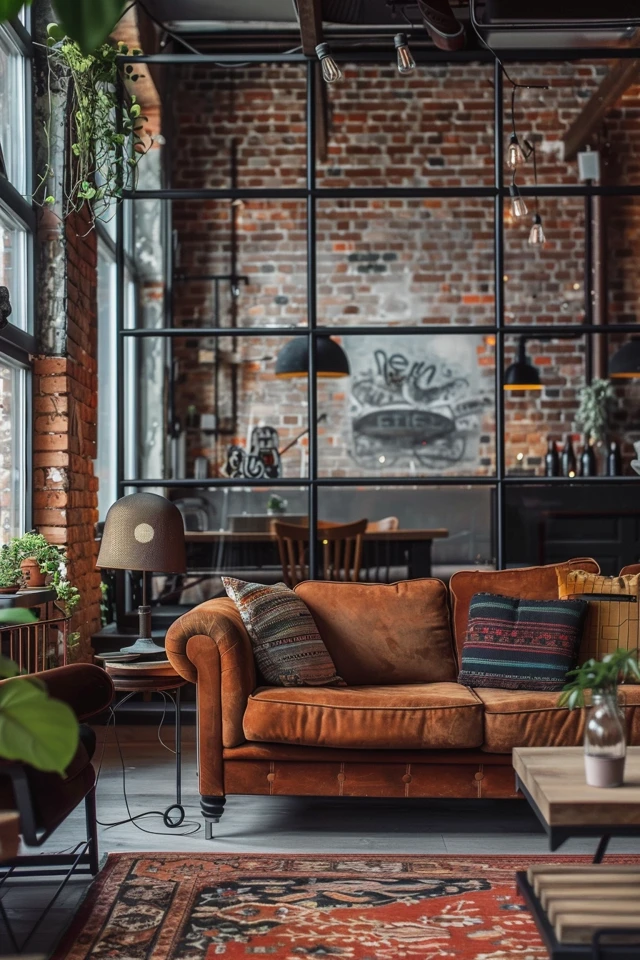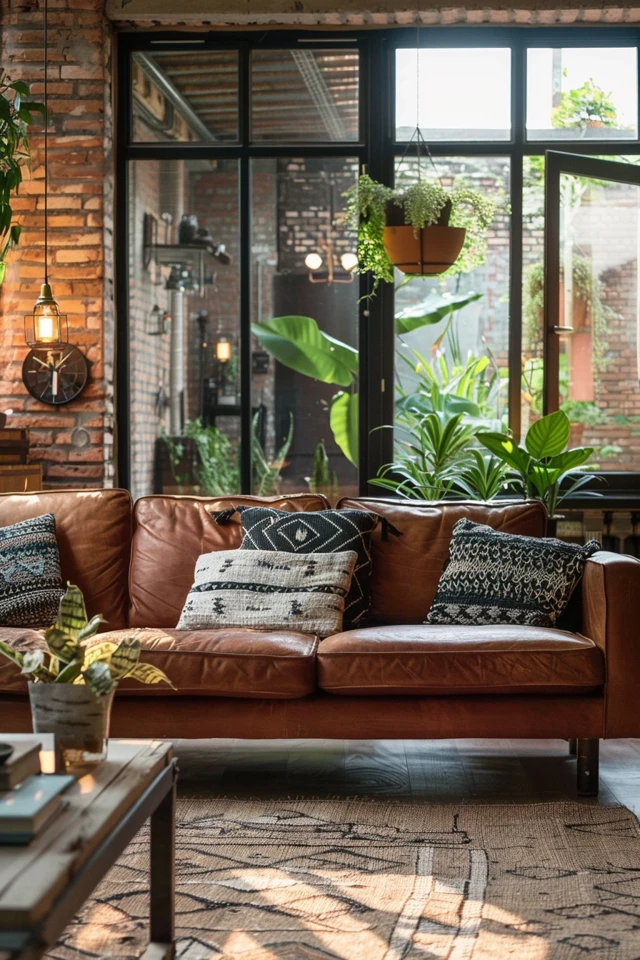When it comes to creating a stylish and unique living room, industrial design offers a modern yet rustic aesthetic that is both trendy and inviting. Inspired by old warehouses transformed into urban lofts, industrial interior design showcases exposed architectural elements, like iron or wooden beams, brick walls, and cement floors. By combining natural textures, distressed materials, and a mix of rustic and modern pieces, you can achieve the industrial chic living room of your dreams.
Key Takeaways
- Create a relaxed and welcoming atmosphere with a mix of neutral colors and textures.
- Incorporate rustic textures and natural materials to embrace the unfinished character of industrial design.
- Add exposed architectural elements like brick walls and exposed pipes to enhance the raw and industrial feel.
- Aim for an open and functional space by maximizing the sense of spaciousness and using visual separation.
- Illuminate your living room with industrial-style lighting to enhance the overall aesthetic.
Embrace the Rustic Textures and Natural Materials
One of the essential aspects of industrial design is the use of rustic textures and natural materials. The Industrial Revolution and the availability of raw materials led to the incorporation of aged and weathered elements in factories, buildings, and homes, giving rise to the distinctive charm of industrial design.
Rustic textures such as patinas of rust, oxidized metal, and aged wood are key features that bring character to industrial spaces. Instead of hiding or discarding these materials, industrial design celebrates their natural aging process, allowing them to tell a story and add a unique flair. The authenticity of raw materials adds warmth and depth to interiors, creating an inviting atmosphere with a touch of nostalgia.
In addition to aged wood and metal, exposed architecture plays a crucial role in industrial design. Exposed brick walls, salvaged materials, and exposed pipes are all elements that contribute to the raw and unfinished aesthetic. These architectural features not only showcase the history and craftsmanship of the building but also add visual interest and texture to the space.

“The mixing of rustic textures and natural materials is what makes industrial design so captivating. It’s about embracing imperfections and celebrating the beauty of raw materials.” – Interior Design Expert
The use of salvaged materials is another hallmark of industrial design. Incorporating reclaimed wood and salvaged items not only adds a sustainable element to the design but also infuses the space with a sense of authenticity and history. Whether it’s weathered barn wood or repurposed industrial machinery, salvaged materials bring a unique charm to industrial interiors.
When designing your industrial living room, consider incorporating these rustic textures and natural materials to create a space that exudes charm and character. Embrace the raw, unfinished elements that industrial design is known for, and let the patinas, exposed architecture, and salvaged materials add depth and personality to your living space.
Stay tuned for the next section, where we will explore how to create an open and functional space using industrial elements.

Create an Open and Functional Space with Industrial Elements
When it comes to designing an industrial living room, one of the key elements to consider is creating an open and functional space. The industrial design aesthetic is often associated with open floor plans, reminiscent of urban lofts, that maximize the sense of spaciousness and minimize the use of walls.
In homes where complete open floor plans may not be possible, there are staging techniques that can be employed to give the illusion of openness. By avoiding the use of rugs, incorporating mirrors for added ambience, and ensuring ample lighting, you can enhance the open feel of the space. These simple adjustments can make a significant difference in the overall atmosphere of the room.
In addition to an open layout, it’s important to create visual separation between different functional areas within the open space. This can be achieved through the use of large area rugs, room dividers, movable partitions, and strategically placed bookshelves. These elements not only add visual interest but also provide functional areas that serve different purposes, contributing to a well-balanced and organized living room.
By embracing the concept of an open floor plan and incorporating industrial elements, such as large area rugs and room dividers, you can create a space that is both visually appealing and functional. The versatility of movable partitions allows you to transform the room according to your needs, providing flexibility and adaptability. This not only enhances the overall design but also enhances the usability of the space, making it a more inviting and enjoyable environment.


